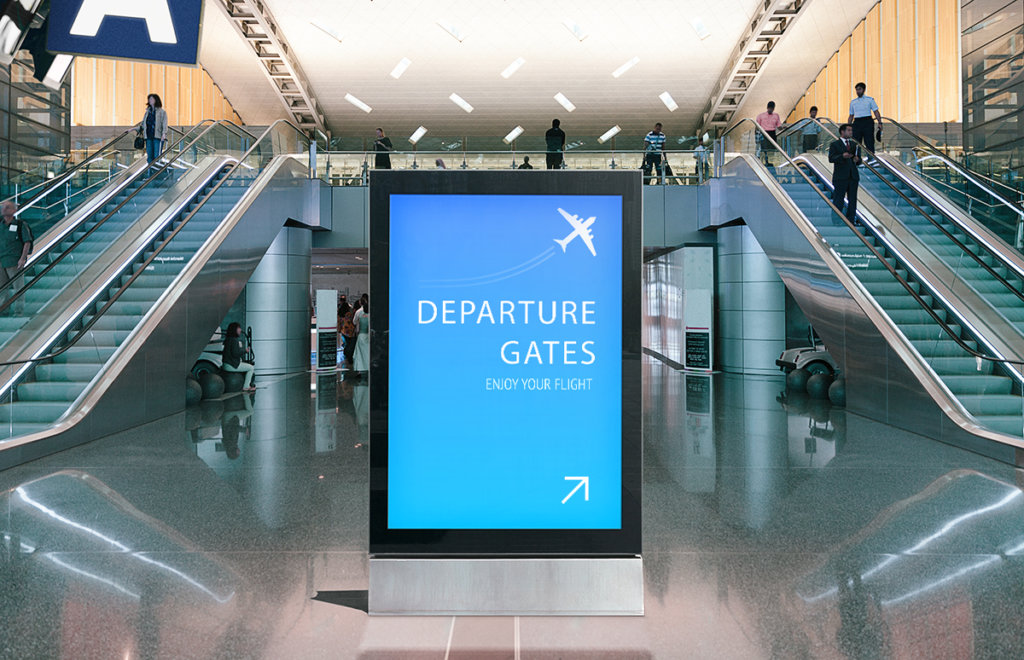
Have you ever been in a new building with somewhere important to be, only to find yourself completely lost? Maybe you were late for your appointment because you were confused about which room and floor you needed to go to. While the directory in the lobby told you where to go, it was it was no help in showing you how to get there.
You don’t want people to have the same experience in your business. whether they are customers, visitors, or new staff members. Wayfinding systems are essential for people who are unfamiliar with your company’s environment. That’s why most businesses have implemented a wayfinding system, including maps, floor markers, arrow signs and room labels, to direct people toward their destinations.

Is your wayfinding system rudimentary and outdated, though? While floor markers might be helpful in large, open spaces, complex buildings and large campuses benefit from more advanced technology. In fact, there are several reasons why it’s likely time to upgrade your organization’s wayfinding strategy:
1. Direct Your Visitors to Important Locations
The most obvious advantage of upgrading your wayfinding system is — especially for companies that don’t have a wayfinding strategy at all — directing people where to go if they have not visited your premises before.
Airports, for instance, are filled with wayfinding signage to help patrons find their gates. But any business can create a comprehensive system by using wayfinding signage software with TV screens that already exist around your building. If a visitor needs to meet with your human resources department, for example, then they can follow the screens to find the right area without asking for directions or ending up in the marketing department.
You can also use digital wayfinding signage to point people where you want them to go. Are you offering a new product you want customers to see? You can use your wayfinding system to ensure they walk by the right display.
2. Create a Pleasant Visitor Experience
What are your emotions when you are lost in a new building? Probably something like panic, disappointment, and frustration. The company should have a better wayfinding system, and you can’t help but think of it more negatively than you did before.
Sparing your visitors this headache creates a pleasant experience. It’s nice when you can enter a new space and head right where you need to without any confusion. Easily navigable premises make visitors happy and encourage them to return (depending on your business type), which is beneficial for your brand’s reputation.
3. Decongest High-Traffic Areas
Crowded hallways make it difficult for people to get from one place to the next. Fortunately, you can use wayfinding signage to help decongest high-traffic areas and allow everyone to move around unobstructed (not to mention quietly because crowded spaces can get loud and stuffy).
This advantage is especially critical during the COVID-19 pandemic when you need people to be at least six feet apart from each other at all times. Set up your signage screens in a way that points people toward alternate passageways for the sake of everyone’s wellbeing. Decongesting hallways can also reduce the risk of accidents, such as when people travel through your building with heavy equipment.
4. Enhance Communication Between Buildings
Digital wayfinding signage is especially helpful for large organizations with more than one building. For instance, colleges and universities should implement a wayfinding system that helps new students find their classes across campus. Navigating one building’s interior is challenging enough, but finding your way between multiple can be overwhelming without guidance.
In addition, an outdated wayfinding system with plaques and printed signs is inconvenient and costly for administrators. If a department were to move offices or undergo construction, someone would have to manually update all the engraved and printed signage to reflect the organization’s new layout. However, a digital wayfinding strategy is much more convenient because administrators can manage organization-wide software from a centralized dashboard.
5.Improve Emergency Planning
Are you prepared to handle emergencies? You might have posted fire evacuation routes on a few walls or asked your employees to memorize extreme weather lockdown procedures, but there is always the possibility that they’ll forget everything in a panic.
Digital wayfinding systems are useful tools for creating, implementing, and executing a real-time emergency plan that communicates when people need to lockdown, evacuate, or take cover. When someone is in doubt about where to exit or where the safest rooms are, all they need to do is look up at a screen on the wall.
6. Communicate Rules and Regulations
Besides helping building occupants navigate their way around, the best wayfinding strategies inform people about specific rules and regulations. For example, you could create digital “no smoking signs” around your office, communicate quiet hours, or convey etiquette you would like people to observe in a particular room.
Your wayfinding system is a significant component of visitors’ first impression of your business. Printed signs can direct people where to go, but digital signs are capable of much more.